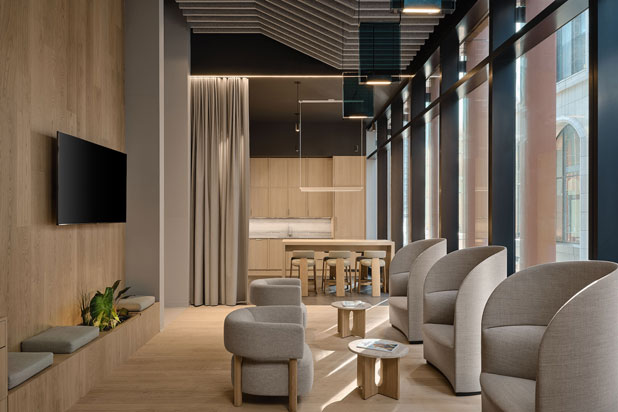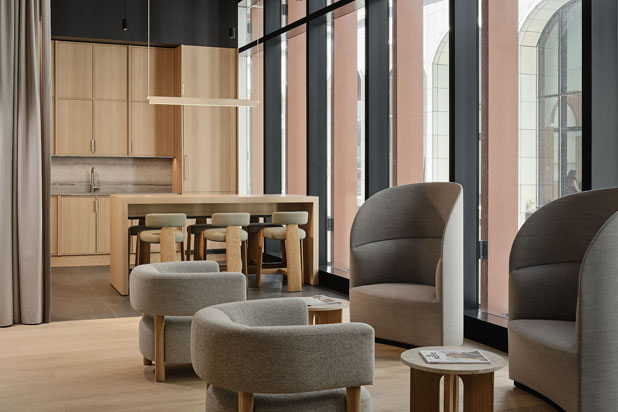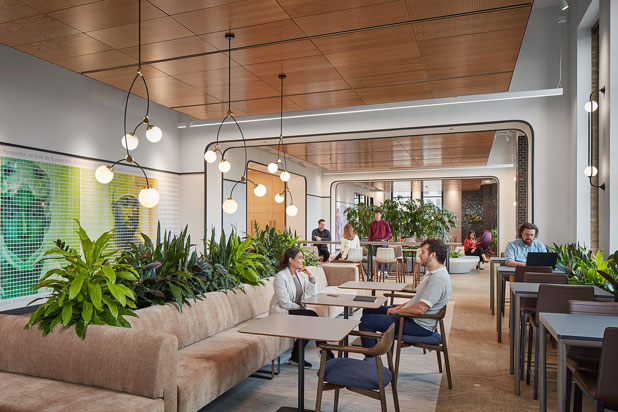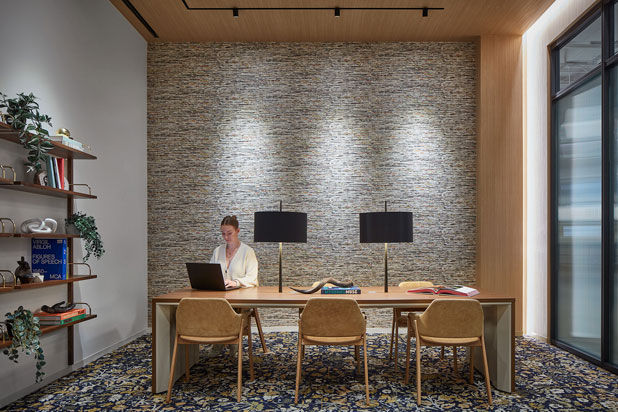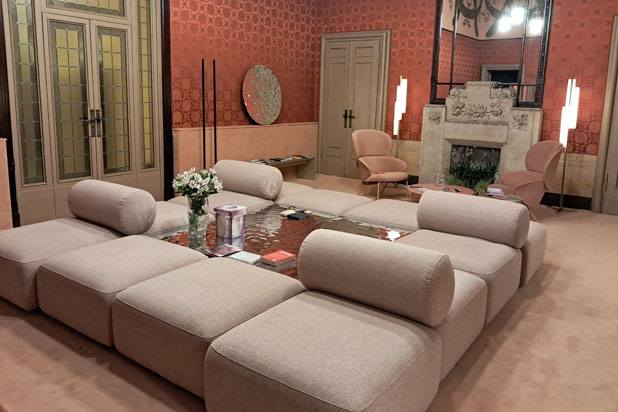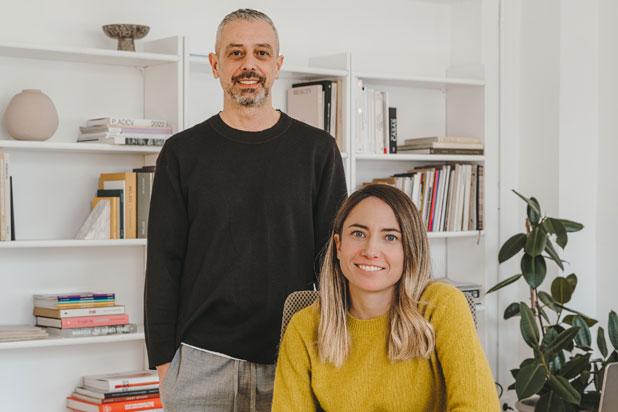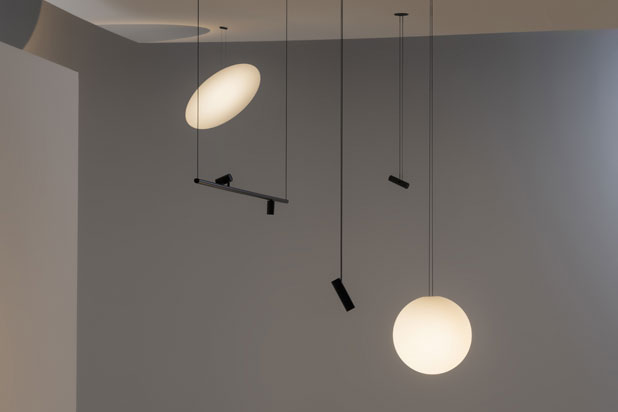The B.lux Group, renowned for its bespoke, timeless, and functional designs, is now the go-to choice for the American companies Vizient and Lumea Offices, who have turned to B.lux’s luminaires to bring their ideas to light.
The offices of the laser eye surgery giant Lumea, designed by Reflect Architecture and located in Toronto’s The Well, sought to challenge traditional clinical spaces with a fresh, innovative approach. The project blends technical expertise with natural elements, from the curved glass block walls to the warm wood tones. Every detail is crafted to promote comfort and tranquility in the moments immediately before and after a procedure. The Roof S130 was chosen to illuminate the waiting and consultation rooms, direct-light aluminum suspension luminaires that blend seamlessly with the organic aesthetic of the project, enhancing the warmth of the space and creating a welcoming atmosphere. Lumea sought out this passive environmental treatment because it represents a core principle of its approach to patient care and recovery.
For its part, Vizient’s offices, designed by Partners by Design and located in the West Loop of Chicago, Illinois, are envisioned as a place where “Cities and Parks come together.” The nation's largest healthcare performance improvement company needed two offices in a dynamic 110,000-square-foot space that could blend a modern, sophisticated, and technologically advanced aesthetic with the art deco details of the historic Old Post Office.
To illuminate these offices, B-lux used the C_Ball System and Ronda collections. The C_Ball System, designed by Stone Designs, is a tubular lighting system to which the signature lighted blown-glass spheres in an opal white finish are attached, allowing the lighting to adapt to the spaces. The Ronda table lamps, created by Jorge Pensi and customized for this project, add the finishing touch to an office that combines technology and comfort.
B.lux, with its long history in the trade, continues to explore new horizons, creating functional and attractive spaces by adapting tradition to modern needs.
